5 Companion Plants for Horseradish (With Pictures)
-
Pete Ortiz
- Last updated:

Horseradish may be an acquired taste, but it packs plenty of surprising benefits behind its sharp flavor and powerful aroma.
The unique compounds that give us the tangy taste of horseradish sauces boast a host of cancer-fighting, antioxidant, and antibiotic properties. In the garden, those same compounds fight soil-borne pathogens and herbivorous insects.
As a low-maintenance plant, horseradish supplies an easy-going and seemingly automatic pest prevention approach. But as anyone who’s ever had a colossal helping of wasabi will tell you, there is such a thing as too much of this spicy perennial.
Horseradish can quickly become invasive if it grows unchecked, and its pest-repellent qualities become far less beneficial among certain vegetables. When you plant horseradish in the wrong place, you could create more work than it’s worth. Get the most from adding horseradish to your garden with this look at proper companion planting.
Why Is Horseradish a Good Companion Plant?
Like many other cruciferous plants, horseradish contains secondary metabolites called glucosinolates (GSLs). In horseradish, the primary GSL is sinigrin. When horseradish cells suffer damage, an enzyme in the plant called myrosinase mixes with and hydrolyzes the sinigrin, creating allyl isothiocyanate (AITC), or “mustard oil.”
AITC gives horseradish its potent aroma and flavor alongside its cancer-preventing benefits. At the dinner table, you only release AITC after grating, mashing, or otherwise destroying fresh horseradish roots.
In nature, AITC is the primary component of horseradish’s antibacterial, antifungal, and pest-preventative traits. If a bug or fungus consumes part of the plant, it will break the barriers that separate the sinigrin from the myrosinase. Like a molotov cocktail, the two mix to create AITC, either killing the pest or driving it away.
Agricultural experts value the power of AITC in eco-friendly biofumigation. Various industries use synthetic AITC in integrated approaches for controlling pests, fungi, bacteria, nematodes, and other threats.
The repellent qualities of GSLs and AITC can be potent enough to ward off attackers around nearby plants. But although other Brassica veggies, including broccoli and Brussels sprouts, also contain those compounds, horseradish separates itself as a beneficial companion plant through its extremely high AITC levels. For comparison, horseradish supplies an AITC concentration of 1,350 mg/kg, while cabbage only contains 3 mg/kg.
Outside of certain mustard plants, horseradish is your best bet for realizing the benefits of GSL and AITC through planting. If you’re looking for the best place to start, try pairing it with these practical companion plants.
The 5 Great Companion Plants for Horseradish
1. Potatoes
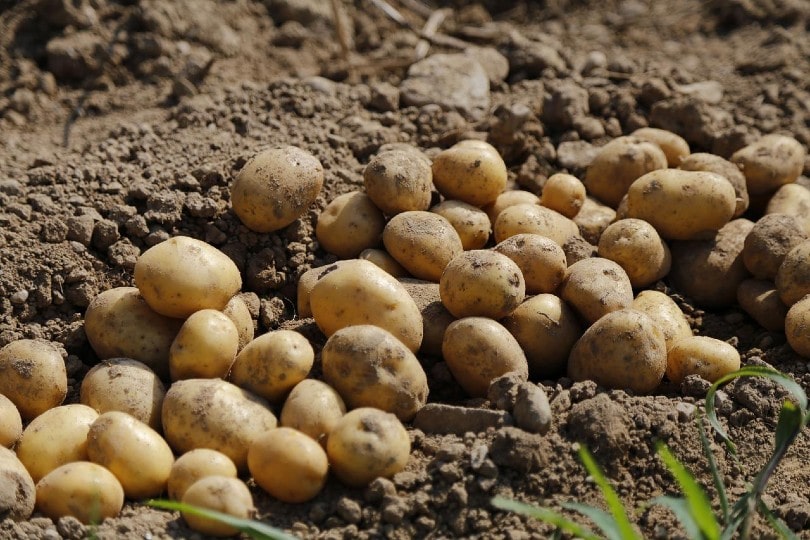
| USDA Hardiness Region: | 3–10 |
| Sun: | Full/partial |
| Soil: | Loose, well-drained |
Horseradish can help other underground growers like potatoes and sweet potatoes by fortifying the soil against disease and preventing common pests. A well-placed plant may ward off insects like Colorado potato beetles, whiteflies, blister beetles, weevils, and certain aphids.
Most experts recommend planting horseradish at the corners of a potato patch to create a defensive barrier that won’t intermingle with your potatoes. Horseradish grows vigorously through underground shoots and will quickly encroach on potatoes if left untended, causing several headaches.
When it grows too close to its companion plants, horseradish can lend its spicy, peppery flavor, which many people won’t enjoy. Because you have to dig potatoes, you may also hit overlapping horseradish roots. If you break them off and work them into the soil, there could be new, unintended horseradish plants growing in the patch next year.
2. Rhubarb
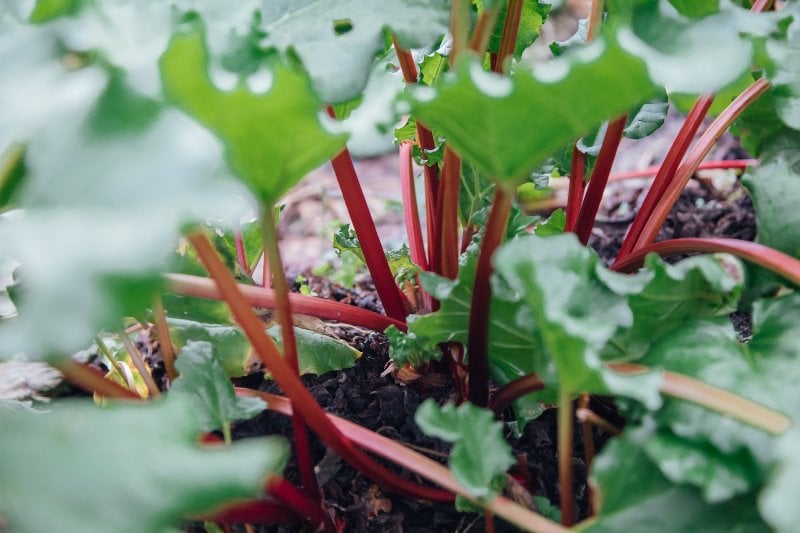
| USDA Hardiness Region: | 3–8 |
| Sun: | Full |
| Soil: | Rich, well-drained |
Rhubarb and horseradish are mutually beneficial in the garden. While horseradish can serve as a regenerative sacrifice plant for slugs, rhubarb can help repel many Brassica pests. Leaves contain high amounts of oxalic acid, a toxic substance to people, animals, and insects. Planting rhubarb may control flea beetles on your horseradish, and you can even use the leaves in a DIY insecticidal spray for the garden.
As with any companion plant, you must separate rhubarb and horseradish to prevent the latter from overtaking the bed. An efficient option to prevent out-of-control root growth is to plant the horseradish in an open-ended bucket set into the ground. The roots will still be able to grow into the soil, but the bucket walls will keep the shoots from extending laterally.
3. Strawberries

| USDA Hardiness Region: | 4–9 |
| Sun: | Full |
| Soil: | Rich, sandy, well-drained |
It’s hard not to think of strawberries when you think of rhubarb, so why not grow them together? With horseradish growing nearby, strawberries will enjoy the same pest-preventing benefits to help them handle slugs, weevils, and even larger rodents that try to steal the juicy fruit. When left to flower in the summer, horseradish may even help attract critical pollinators to help late-growing strawberries emerge in abundance.
4. Fruit Trees
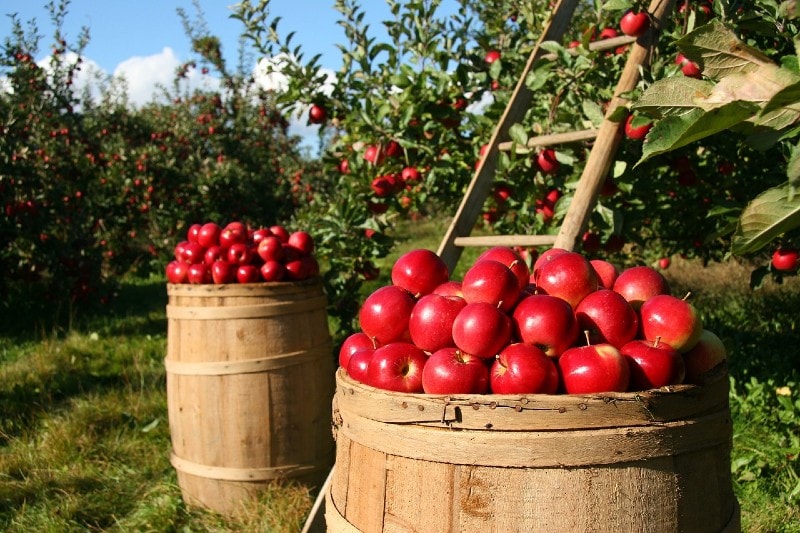
| USDA Hardiness Region: | 2–11 |
| Sun: | Full |
| Soil: | Loamy, well-drained |
Horseradish tends to pair well with most fruit trees, meaning you can take advantage of it no matter your zone. Grow horseradish up to zone 3 with apple and cherry trees or down to zone 8 to accompany citrus and peach trees. Planting it at the base of your trees will keep away small beetles, weevils, and other bugs, while also stopping rats, mice, moles, and some birds from getting comfortable in the orchard.
Fruit trees also benefit from nearby horseradish companions because of their fungicidal qualities. Outside of prepared relishes and sauces, you can use harvested horseradish in organic sprays to prevent apple scab and bacterial infections.
5. Grapes
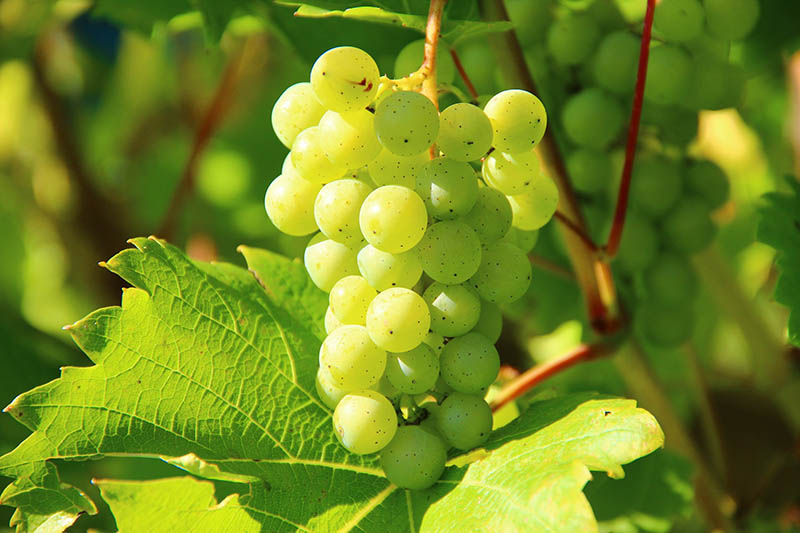
| USDA Hardiness Region: | 4–10 |
| Sun: | Full |
| Soil: | Rich, well-drained, clay/sandy |
Grapes are a flavorful foundation for homemade jams and juices that bring beauty to the garden, especially when they have a chance to thrive on an arbor or trellis. Like tree fruit, grapes may fall victim to various pests and rodents. As a companion plant, horseradish can stem the onslaught of would-be attackers. At the same time, it can tolerate the partial shade created by an upward-growing vine.
The Worst Companion Plants for Horseradish
A broad assortment of vegetables will play friendly with horseradish, but there are instances where it can be a nuisance. Horseradish is an aggressive grower, so it needs to remain in check throughout the growing season and even after harvest. It propagates effortlessly from minor root cuttings and will likely re-emerge if you till it into the soil.
As it spreads, horseradish can impose itself on neighboring garden veggies. Leafy greens and beans can easily take on a peppery flavor, and horseradish will compete for root space with many plants.
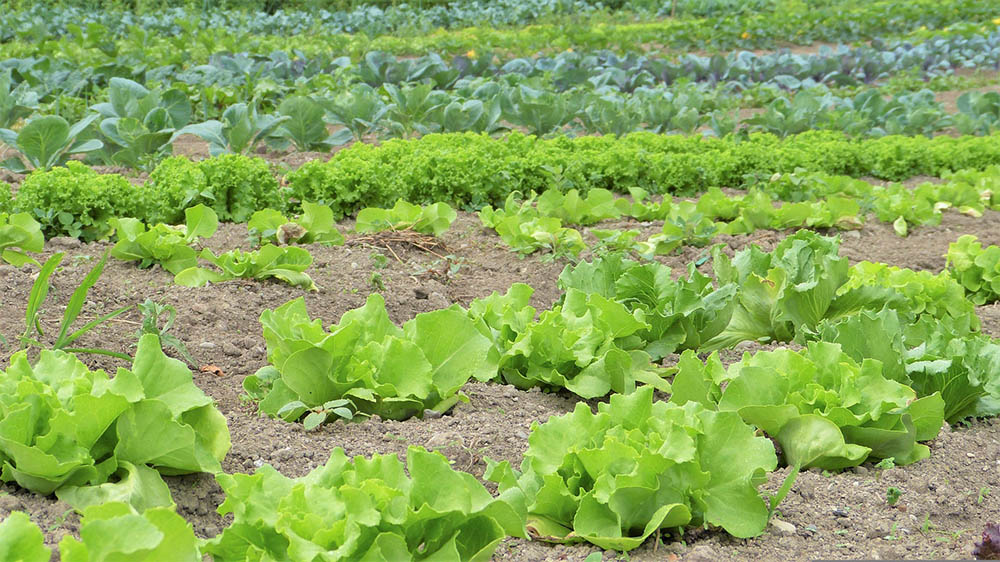
Horseradish and Other Mustard Plants
Brassica plants like broccoli, cabbage, bok choy, and kale are poor companion plants for horseradish. As part of the family, horseradish shares characteristics with these veggies, including the development of GSLs and their byproducts. While GSLs and AITC can repel and harm generalist insects, various specialist pests and fungi have no problem attacking horseradish and its family members.
Interestingly, many of these specialist insects, like cabbage aphids and horseradish flea beetles, sequester GSLs as they consume plants to make “mustard oil bombs,” much like the horseradish plants they infest. By making GSL byproducts like isothiocyanates, these pests can ward off predator bugs, making your pest prevention efforts more challenging.
To keep horseradish from bringing unwanted pests around your other Brassica veggies and vice versa, separate them in the garden and carefully plan your crop rotations. Should your broccoli develop root rot one year, your horseradish could pick it up the next season if it takes over the area. Rotate horseradish so that it only appears in a former mustard plant plot once every 3–5 years.
Conclusion
Horseradish can grow with virtually zero maintenance, and with all of its benefits for companion plants and your health, there’s no reason to leave it out of the garden this year. In most cases, the only threat is that your crop may be too successful, which is easy enough to avoid with careful planning. Add horseradish near these companion plants as an organic approach to keep your garden pest-free and flourishing.
- See also: How to Grow Horseradish – 3 Expert Tips
Featured Image Credit: kungfunamhuynhdao, Pixabay
Contents


